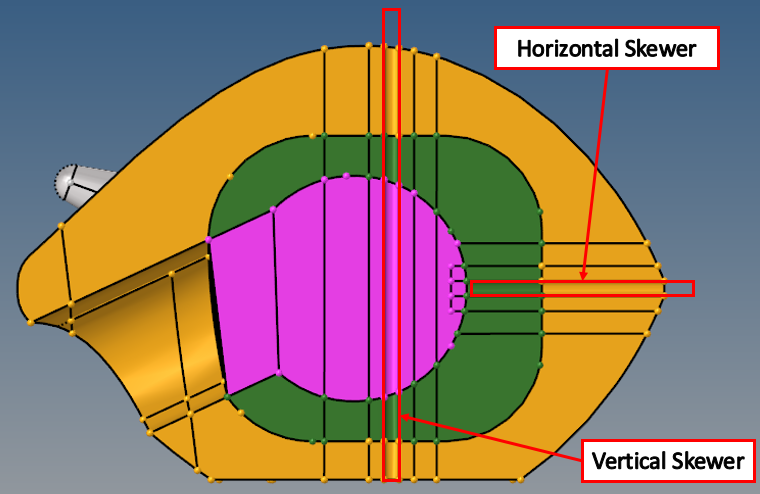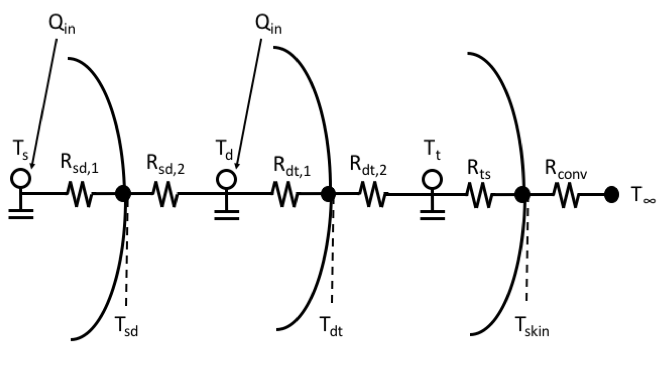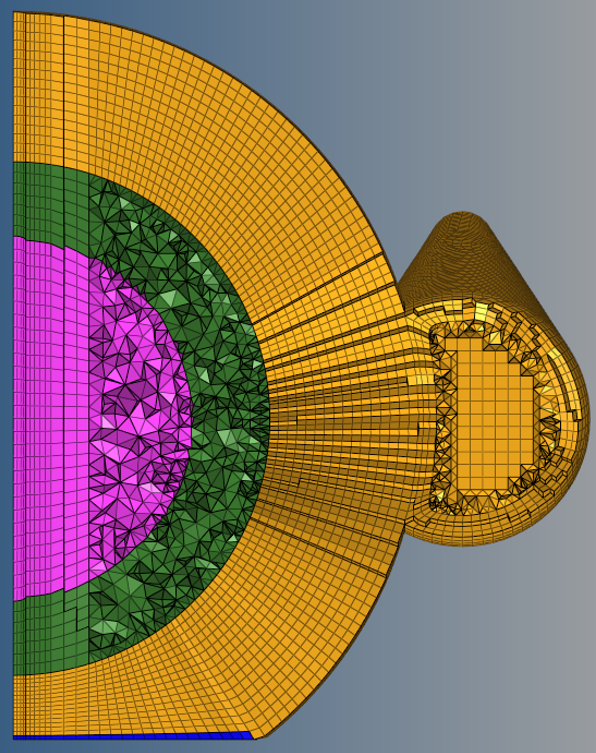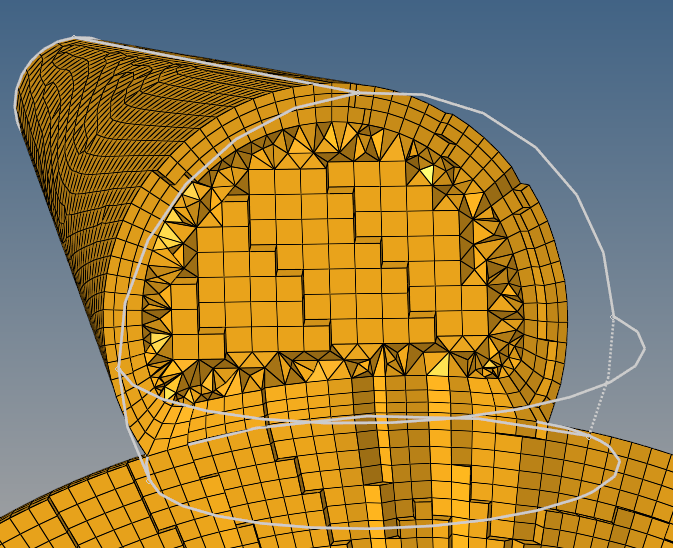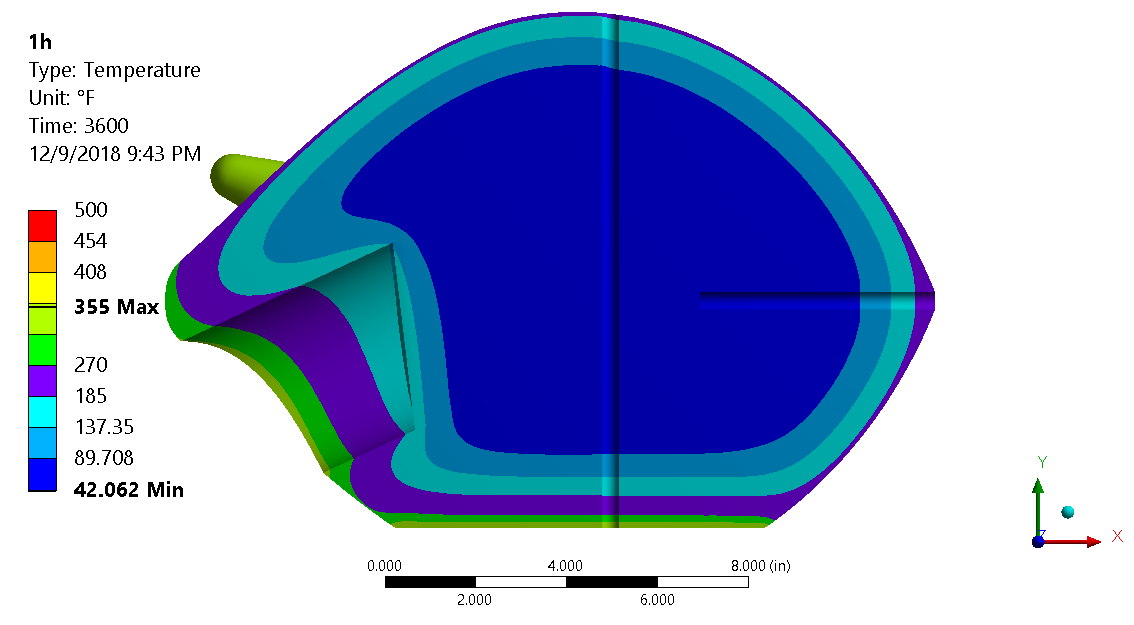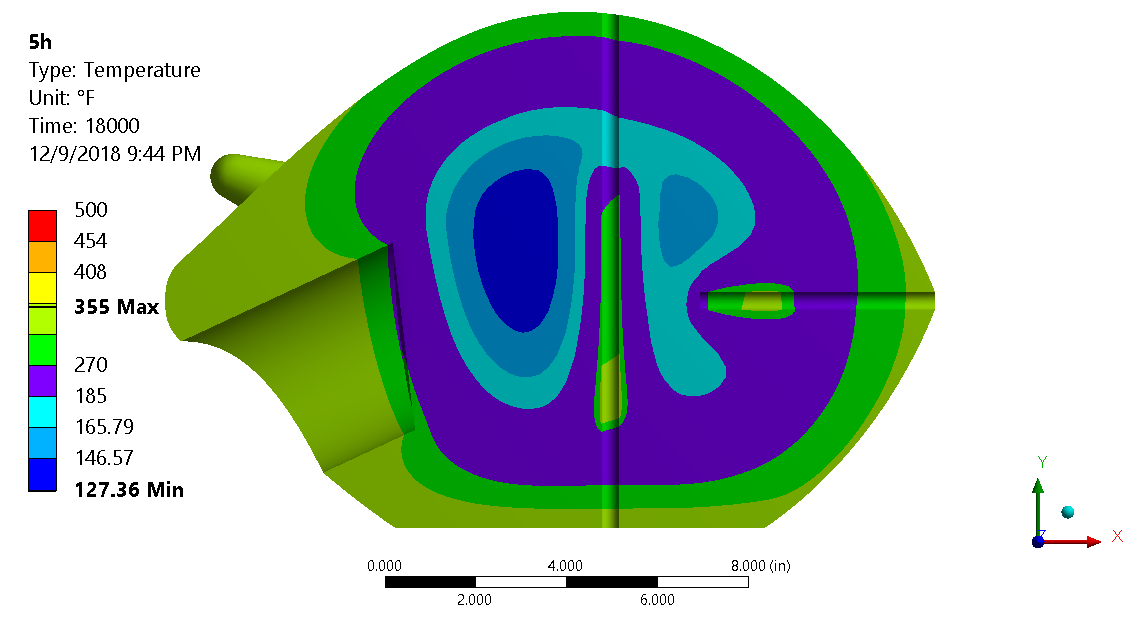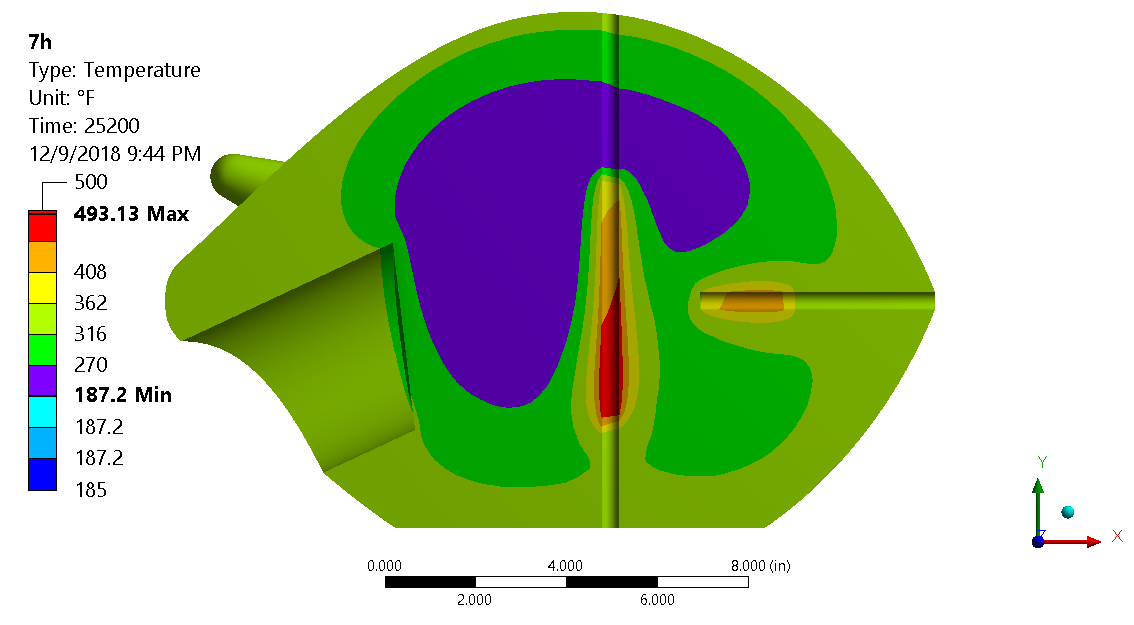Turducken Cooking Challenge
2018 / Course Final Project
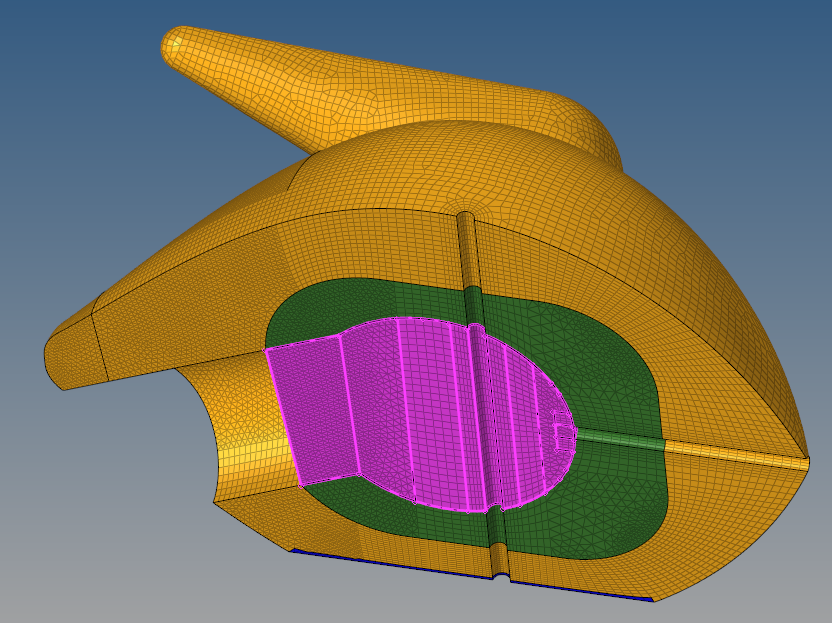
Role:
Theoretical Model Designer, Mesh Designer, Documentation Lead
Timeline:
Fall 2018
Tools Used:
ANSYS, SolidWorks
Design Overview
The final project for Cooper Union’s Intro to FEA course is the Turducken Cooking Challenge. The class is split up into 4-5 person teams to design a cooking system for a turducken using a commercially available oven and two heating skewers. The turducken has three layers for each ingredient: a turkey outer layer, a ducken (homogeneous mixture of duck and chicken) middle layer, and a stuffing center (homogeneous mixture of potatoes and onions). The goal is to cook the turducken as fast as possible with minimal burnt volume. The parameters considered are the skewer design and oven temperature. Altair HyperMesh is used to discretize the turducken geometry into a mesh. ANSYS Workbench is used to perform a transient thermal analysis to calculate the resulting temperature distributions of a particular cooking process. My group’s meshed turducken is shown in the image above.
Background
Each team is provided with the same CAD model of the turducken and restrictions on the design of the heating skewers. My team and I worked together on designing the mesh, deciding the placement of the skewers, and setting up the transient thermal FEA study. I led the hand calculation of the transient heat transfer to verify the results from ANSYS.

Method and Results
We decided on a simple pointed rod design for the skewers, and placed them at the widest parts of the turducken since those will be the areas that will take the longest to cook. We also researched the relevant material properties of all the ingredients to use accurate values for thermal conductivity, density, and specific heat. Since the turducken is cooking, water evaporates during this cooking process and these values will all change as the percent composition of water changes. We calculated these values at a range of temperatures and then input those into the ANSYS study.
We also worked together on designing an appropriate mesh. Our team wanted to incorporate as many hexahedral (hex) elements as possible due to their shape efficiency and accuracy benefits. We used hex elements at areas that would experience the largest rate of change of heat transfer (boundaries at each layer). Where hex meshes would fail the element check, tetrahedral elements were used as the next best option.
To verify the ANSYS results, I designed a transient thermal RC circuit with a simplified turducken geometry. Each layer of the turducken is represented by a node. Each layer’s thermal conductivity is modeled as a resistor representing thermal resistance, and each layer’s density and specific heat is used to calculate its thermal capacitance modeled as a capacitor. The gallery below includes images of our mesh, thermal RC circuit, and transient thermal study results.

